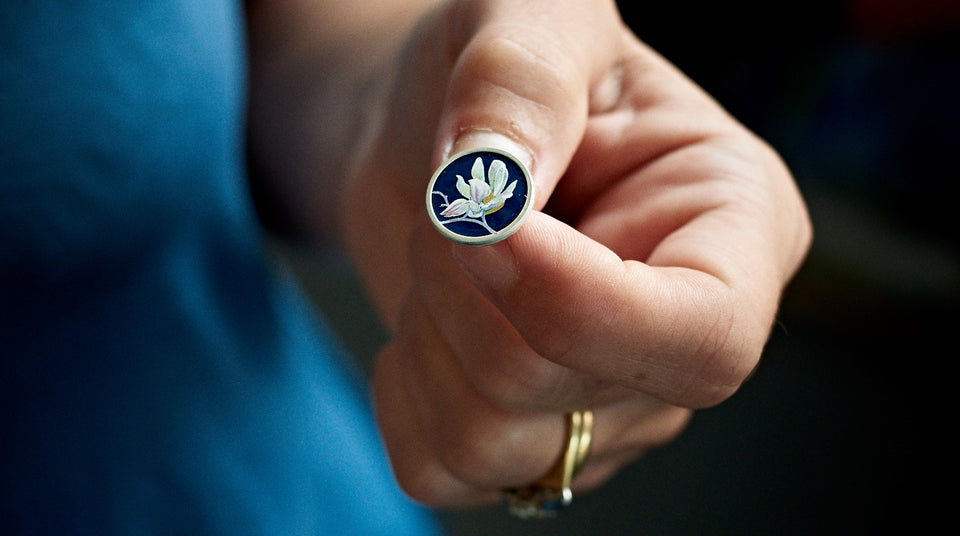Birmingham’s Jewellery Quarter

It seems fitting for Birmingham’s Jewellery Quarter, an area dedicated to crafting objects of beauty and desire, to have one of the most splendid buildings in England acting as an entrance to its unique neighbourhood.
The H.B Sale Ltd Building, located on the quarter's boundary with the city centre, was constructed to house metal works in 1895. The building's facade exhibits a unique Spanish Romanesque style, that stands prominent against the more typical surrounding west midlands architecture.

H.B. Sale Building on Great Hampton Row
The building’s stunning architectural details carved from terracotta reflect the creativity and craft of the people who have occupied this unique industrial and residential development for over 200 years.
Since medieval times, the area has held its position as an important place for trading. However, during the industrial revolution, the city's line of fortunes was aided by its proximity to an abundance of iron ore and coal from South Staffordshire and Worcestershire. By the end of the 18th century, it was the nation’s leading industrial town.
One of the district’s key areas of production was jewellery and personal accessories, buckles, buttons and boxes. As the numbers of artisans and craft-based businesses swelled over the years, so did the spatial needs of the family firms that formed the trade’s backbone.

An H.B. Sale Ltd. Advertisement
Many of these firms operated from attic workshops of residential houses or buildings constructed in back gardens. For the jewellery trade, it was integral that businesses were located close to one another to enable economically efficient supply chains. For example, an item such as a necklace could involve several processes carried out by different firms.
From 1770, rural land northwest of the town was developed into what is now known as St Paul’s Square, a collection of elegant houses and premises built around St Paul’s Chapel. Prosperous jewellery merchants and professionals moved from the congested centre to the new tree-lined square.
Over subsequent years, the area expanded into the surrounding natural landscape to support the industry's growth, eventually covering some 264 acres. While jewellery was the star attraction, the area was also noted for its production of coins, medals and metalware, which rapidly expanded with design innovations, including the manufacture of goods such as the whistle.

A Metropolitan Police Whistle from Joseph Hudson
The first whistle for a football referee was produced in the Jewellery Quarter by Joseph Hudson in 1878. Hudson also invented the police whistle in 1883 and later created whistles for RMS Titanic, a few of which were found in the ship's wreckage.
In the mid-19th Century, the jewellery market’s growth was boosted in part by the gold rushes in Australia and California, and the introduction of three inexpensive lower standards of gold alloy.

J W Evans, a producer of production of dies and tools for jewellers.
Later on, trinkets were made more affordable, and items once associated with the upper classes were now widely available. Gentlemen’s cufflinks – first introduced by French tailors in the 17th Century – enjoyed great success following the invention of a new mass production method by the jeweller George Krementz.
Krementz, a German living in America, was inspired by the manufacturing process for bullets, and in 1876 used the same method to create cufflinks. This innovation meant that by the early 1900s cufflinks were an integral part of most stylish men’s wardrobes; many firms within the Jewellery Quarter aligned to cater for this trend.

Turnbull cufflinks being crafted in Birmingham
In 1914 around 20,000 people were employed in the various trades housed in the area, including that of ‘die sinking’. This was the practice of adding letters and numbers to metal, a process the firm Gladman & Norman founded its business on in 1910. The firm later progressed into making military badges, and in recent years acquired the jewellery company R.J Smith, which creates all of Turnbull and Asser’s cufflinks.


Turnbull’s limited edition Magnolia cufflinks, created at Gladman & Norman.
The Birmingham Assay Office, established by the industrialist Matthew Boulton in 1773, was known for testing the composition of precious metals. The office traditionally used an anchor as their hallmark, this may seem an odd choice given that Birmingham is far from the sea, however when Boulton travelled to London to lobby for the foundation of the office he would stay in the Crown & Anchor inn.
Boulton had later pushed for an Assay office in Sheffield too, and when Parliament passed the Assay bill allowing for this, Sheffield was assigned the crown and Birmingham the anchor.
Today many of the workshops and small factories have been converted for residential or hospitality purposes and with the post-war rise in imported goods, many businesses could not compete, and the buildings were sold to developers.
Despite the industry's workforce falling to around 6,000, the Jewellery Quarter still accounts for 40 per cent of all jewellery made in the UK today. It remains a remarkable community still devoted to creating a more stylish world.
Turnbull & Asser proudly support age-old artisanal industries like the Birmingham Jewellery Quarter, partnering with Gladman & Norman to ensure our cufflinks are of the highest quality. For our latest Eveningwear collection, we have designed a limited edition run of hand-painted sterling silver cufflinks.
Shop Turnbull’s collection of cufflinks
The journey of our cufflinks











